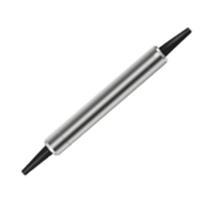Fiber Optic Switches, Multiplexers, Demultiplexers
Results:
776
Manufacturer
Series
Type
Connector Type
Results remaining:776
Fiber Optic Switches, Multiplexers, Demultiplexers
Fiber optic switches, multiplexers, and demultiplexers play crucial roles in the efficient routing and management of optical signals within a fiber optic network. These devices enable the blocking, passing, or routing of optical signals, depending on their specific functionality. Fiber optic switches act as gatekeepers, allowing or blocking the transmission of optical signals. They can be configured to block or pass signals on individual channels or multiple channels simultaneously, depending on the network requirements. By selectively controlling the flow of optical signals, fiber optic switches provide flexibility and control in managing network traffic and ensuring optimal signal transmission. Multiplexers, on the other hand, facilitate the consolidation of multiple channels onto a single fiber optic cable. They combine the individual signals from different sources and route them onto a single channel, effectively maximizing the capacity and efficiency of the fiber optic infrastructure. Multiplexers are commonly used in applications where multiple signals need to be transmitted over a limited number of fibers, such as in dense wavelength division multiplexing (DWDM) systems. Demultiplexers, as the name suggests, perform the opposite function of multiplexers. They receive an optical signal that contains multiple channels and separate or demultiplex it into individual channels. Each channel is then routed to its respective fiber optic cable, allowing for the distribution or routing of a single channel to multiple destinations. Demultiplexers are commonly used in scenarios where the received signal needs to be distributed to multiple receivers or devices. By utilizing fiber optic switches, multiplexers, and demultiplexers, network operators can efficiently manage and control the flow of optical signals within the fiber optic infrastructure. These devices enable the optimization of network resources, enhance signal integrity, and ensure reliable and efficient transmission of data across the network.

















